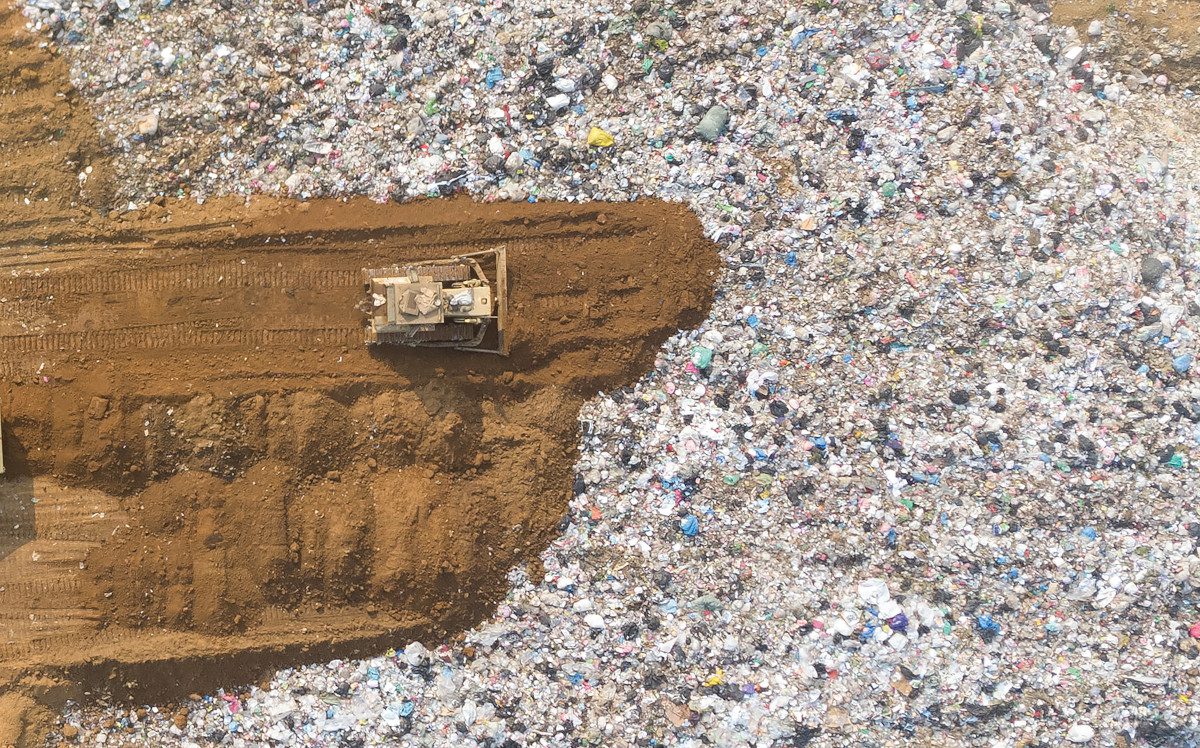
Technologies are available to remove and destroy PFAS, the only doubt is whether they can be deployed within budget and in a sustainable way. There is clearly an appetite for new and better ways of doing it. The price tag is unprecedented: remediation costs alone (i.e., to remove PFAS completely from the environment) would exceed global GDP, in one estimation recently aired.1 And that’s not yet touching upon the costs of removing it from supply chains and manufactured products, a legal Everest whose scale is only just beginning to be appraised. Envirotec reviews recent developments.
PFAS chemicals have infiltrated the environment from a number of sources, including industrial discharge, firefighting foams, and a wide variety of consumer and industrial products. Non-stick frying pans seem to mark the entry point of this class of chemicals into everyday life,2 with the development of PTFE in the 1930s. So they’ve had less than 100 years to accumulate in the environment – but it’s their propensity to do so which all the fuss seems to be about.
The very low levels of PFAS chemicals that seem to be present in tap and bottled water, for instance, have been deemed acceptable by many authorities, as Bluewater’s Bengt Rittri noted in recent comments, but the concern is that their persistence over time leads to bioaccumulation.3
Bottled water is the source of the most recent bad news, with a study in recent weeks from the University of Birmingham and China’s Southern University of Science and Technology detecting two types of PFAS – PFOA and PFOS – in over 99 percent of bottled water samples from 15 countries, including the UK.
PFAS in tap water was also detected by the study, in major cities in Britain and China.
The UK’s Drinking Water Inspectorate recently moved to apply stricter limits to PFAS levels permissible in English and Welsh drinking water, specifically 100 nanograms per litre (ng/L) for a new cumulative sum of 48 PFAS in drinking water. The Royal Society of Chemistry welcomed the move as “a significant new safeguard for public health”, noting that it goes beyond existing limits in the EU, and Scotland, where a similar 100ng/L limit applies to only 20 PFAS. But it still presents a chance that the total amount of PFAS could accumulate far beyond the high-risk threshold.
The group’s Policy Advisor Stephanie Metzger commented: “While the new total limit for the sum of 48 PFAS will protect our drinking water, the chemicals continue to accumulate in our rivers, aquifers and environment. We don’t actually know how many of these chemicals are being produced, and where they end up – so we also urge government and industry to build upon this change by creating a national inventory of PFAS and enforcing stricter limits on industrial discharges.”4
The most stringent drinking water limits in the world have been introduced by the US, with the EPA in 2024 specifying lowest acceptable concentration levels for PFAS at 4 ppt (parts per trillion) each for PFOA and PFOS, plus further limits for 4 other PFAS. So, on the other hand, an even more limited range of substances.5
Of growing concern is the narrow definition applied to PFAS substances in legislation. The OECD’s formulation of the term encompasses up to 10,000 chemicals, a breadth also reflected in legislation currently being debated by the EU, with proposals that aspire to phase out all PFAS, with a few exceptions.6
Popular appeal
A letter to the UK government in late October, from more than 50 scientists, called for tougher regulation, emulating the European approach. One signatory, Associate Professor Tony Fletcher, from the London School of Hygiene and Tropical Medicine, said: “We have found effects on human health in the few specific PFAS which have been studied in detail, and exposure up to now is so widespread.”
“As most uses of PFAS can be substituted with less persistent or less toxic alternatives, the EU initiative to phase out all PFAS (with a few specific exceptions), should be a model adopted by the UK Government.”
The EU-wide restrictions relate to proposed amendments to REACH regulation, under which the manufacture, import, and use of all PFAS would be banned in the EU, except for very specific exceptions. Only uses considered “essential to society” would be exempt, a provision mentioned in connection with medical devices and safety-critical equipment for which there no viable alternatives to PFAS.
Some industries would also be afforded time-limited exceptions, where time is needed to ramp up production using alternative materials. The original proposal identifies proton exchange membranes for fuel cells as an example, where PFSA membranes are key materials.7
Europe’s proposal is certainly the most stringent, but it is under threat from industry lobbying, as a recent flyer from charity group CHEM Trust notes.8
Legislative landmarks
In terms of international legislation, an important landmark is the Stockholm Convention on Persistent Organic Pollutants (POPs), adopted in 2001, and the first international attempt to regulate PFAS, beginning with PFOS in 2009 (later joined by PFOA in 2019 and PFHxS in 2022). Signatories include most UN member states (although notably not the US). However, three PFAS chemicals is still only scratching the surface.9
But recent years have seen ongoing developments at country and regional level. Alignment with the Stockholm Convention seems to summarise Asia-Pacific countries’ efforts, as market intelligence firm IDTechX notes in the publicity for an April 2024 report, with few attempts so far visible to move towards broader PFAS bans. Exceptions include South Korea’s proposed ban of eight PFAS in the cosmetic industry in 2022.
In the US the picture seems disjointed between federal and state level. No PFAS are definitively banned at federal level, while the EPA regulates the manufacture, import and use of certain phased-out PFAS. But at State level, universal PFAS restrictions have been adopted in Maine and Minnesota, similar to those being debated by the EU. California is looking to restrict PFAS use in particular industries, such as textiles and food packaging.
The scale of PFAS contamination in the environment, and its persistent nature, suggests numerous treatment technologies will be required to remove it. Likely contributors appear to include established approaches such as granular activated carbon and ion exchange resins, as used in the water industry (and in home water purification appliances), as well as emerging techniques.
The latter category includes foam fractionation, electrochemical oxidation, photocatalytic oxidation, and plasma-based treatment. Various difficulties currently restrict the use of these approaches, such as prohibitive cost (in the case of electrochemical methods), and the fact that they produce a PFAS concentrate that then has to be destroyed (as with foam fractionation).
Certain new approaches are being presented as a way to sidestep the need for high energy inputs and pressures. For example, ultrasonic degradation (also known as sonolysis) is reportedly able to “completely degrades PFAS at room temperature”. In this case, the liquid to be treated is exposed to ultrasound, provoking a very rapid expansion and contraction of gas bubbles within the material, with the violent collapse momentarily producing the extreme temperatures and pressures required to break down PFAS.10
All inroads to minimizing the complexity and cost of the solution seem to promise great dividends for innovators, given the scale of the problem of PFAS contamination, whose extent seems to be only just beginning to be grasped.
In October, The Guardian released details of correspondence between the Environment Agency and Defra, which seemed to reveal the extent to which the agency’s budget is dwarfed by the scale of the task in hand, with one of its own reports noting that there could be more than 10,000 locations in England identified as suffering from PFAS pollution.11
The report pinpoints historic landfills as the most frequent locations of this kind of contamination, followed by wastewater treatment works, heavy industry, and fire stations and airports (where the legacy of using fire-fighting foams is increasingly coming to light).
The EA report pegs a number of sites as requiring investigation and risk assessment. In the Guardian investigation, the correspondence notes a ballpark assessment of the costs of such work on four sites as between £1.8m-£2.7m. This is to be set against a total contaminated land budget of £300k, plus £200k from another funding stream.
Presumably the pressure to apply the “polluter pays” principle will grow, and the legislative basis for doing so appears to be there, as charity group Chem Trust suggested in comments to the paper. In the meantime, said the group, we need to move to ban these substances from being used at all.
CHEM Trust has in recent weeks produced a flyer on PFAS alternatives for the green transition,12 spotlighting an uncomfortable truth that conventional designs of products such as solar panels’ rely on PFAS. But alternative materials can be found, and a market to sustain them can be supported, and innovation driven, by PFAS restrictions of the kind under discussion in the EU.
The group’s policy recommendations are that the restrictions should maintain their broad scope, derogations should be kept to a minimum, and transition times should be as short as possible.
Notes
[1] Comment attributed to Alison Ling, by Paul O’ Callaghan during the opening address at BlueTech Forum, 3-4 June 2024, Edinburgh.
[2] “Poly- and Perfluoroalkyl Substances (PFAS) in Landfills: Occurrence, Transformation and Treatment”, published in Waste Management, 1 January 2023.
[3] Press release. “Bluewater Calls For Single-Use Plastic Water Bottles To Be Banned As New Study Reveals All Are Likely Contaminated By ‘Forever Chemicals’”, 21 October 2024.
[4] Press release, “NEWS: Stricter limits on forever chemicals in drinking water set to come into effect”, 7 October 2024.
[5] Press release, “Highlighting the Multi-Billion Dollar Need for PFAS Treatment”, IDTechX, October 2024.
[6] ibid
[7] ibid
[8] https://chemtrust.org/wp-content/uploads/PFAS-Alternatives-and-the-Green-Transition.pdf
[9] Press release, “Beyond the Stockholm Convention: IDTechEx Discusses the New Regulations Targeting Forever Chemicals”, April 2024.
[10] “New technologies could help destroy persistent ‘forever chemicals’”. Published in The Conversation, October 11, 2024.
[11] “Decontamination of landfill waste leads to increase in toxic chemicals, says study”, published in The Guardian, 4 Nov 2024
[12] https://chemtrust.org/wp-content/uploads/PFAS-Alternatives-and-the-Green-Transition.pdf






